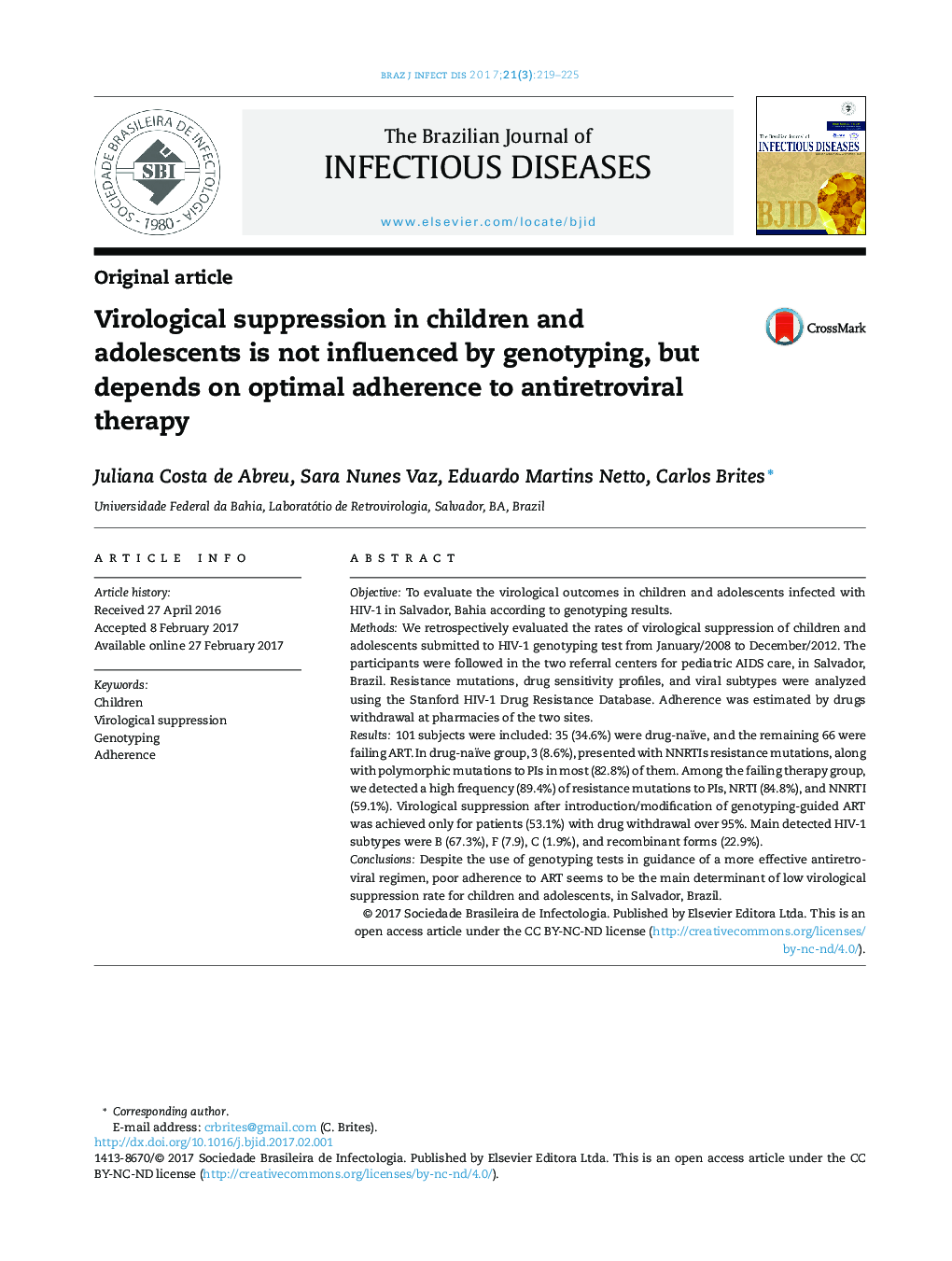| Article ID | Journal | Published Year | Pages | File Type |
|---|---|---|---|---|
| 5665610 | The Brazilian Journal of Infectious Diseases | 2017 | 7 Pages |
ObjectiveTo evaluate the virological outcomes in children and adolescents infected with HIV-1 in Salvador, Bahia according to genotyping results.MethodsWe retrospectively evaluated the rates of virological suppression of children and adolescents submitted to HIV-1 genotyping test from January/2008 to December/2012. The participants were followed in the two referral centers for pediatric AIDS care, in Salvador, Brazil. Resistance mutations, drug sensitivity profiles, and viral subtypes were analyzed using the Stanford HIV-1 Drug Resistance Database. Adherence was estimated by drugs withdrawal at pharmacies of the two sites.Results101 subjects were included: 35 (34.6%) were drug-naïve, and the remaining 66 were failing ART. In drug-naïve group, 3 (8.6%), presented with NNRTIs resistance mutations, along with polymorphic mutations to PIs in most (82.8%) of them. Among the failing therapy group, we detected a high frequency (89.4%) of resistance mutations to PIs, NRTI (84.8%), and NNRTI (59.1%). Virological suppression after introduction/modification of genotyping-guided ART was achieved only for patients (53.1%) with drug withdrawal over 95%. Main detected HIV-1 subtypes were B (67.3%), F (7.9), C (1.9%), and recombinant forms (22.9%).ConclusionsDespite the use of genotyping tests in guidance of a more effective antiretroviral regimen, poor adherence to ART seems to be the main determinant of low virological suppression rate for children and adolescents, in Salvador, Brazil.
